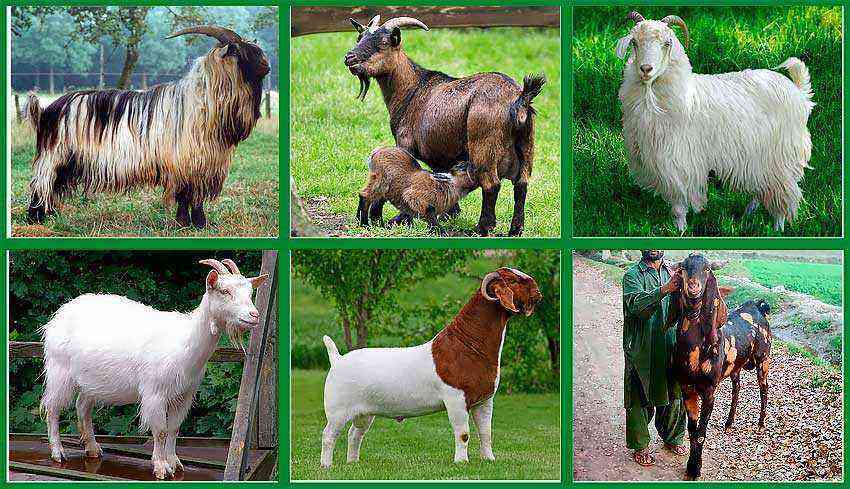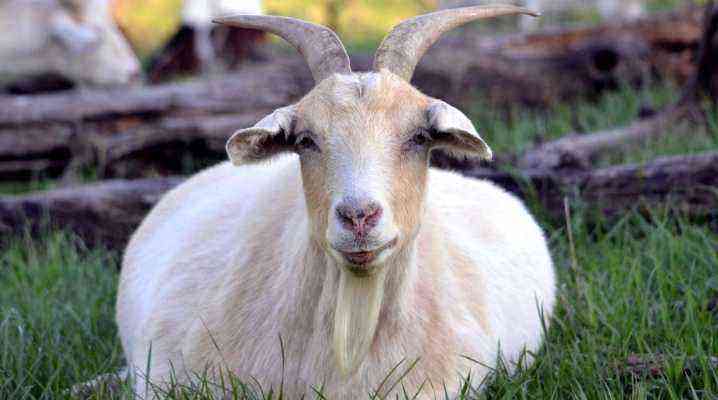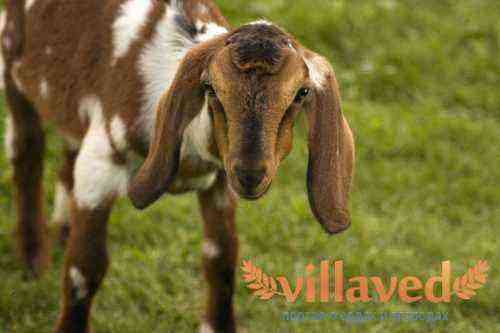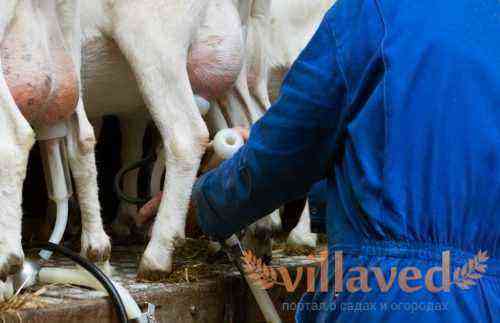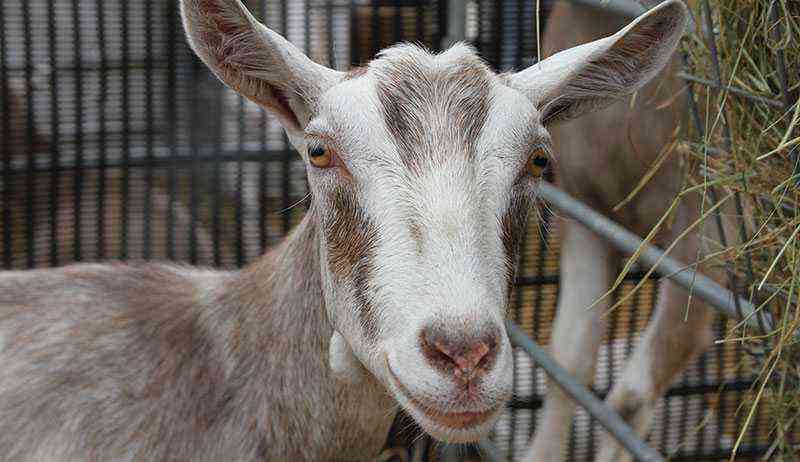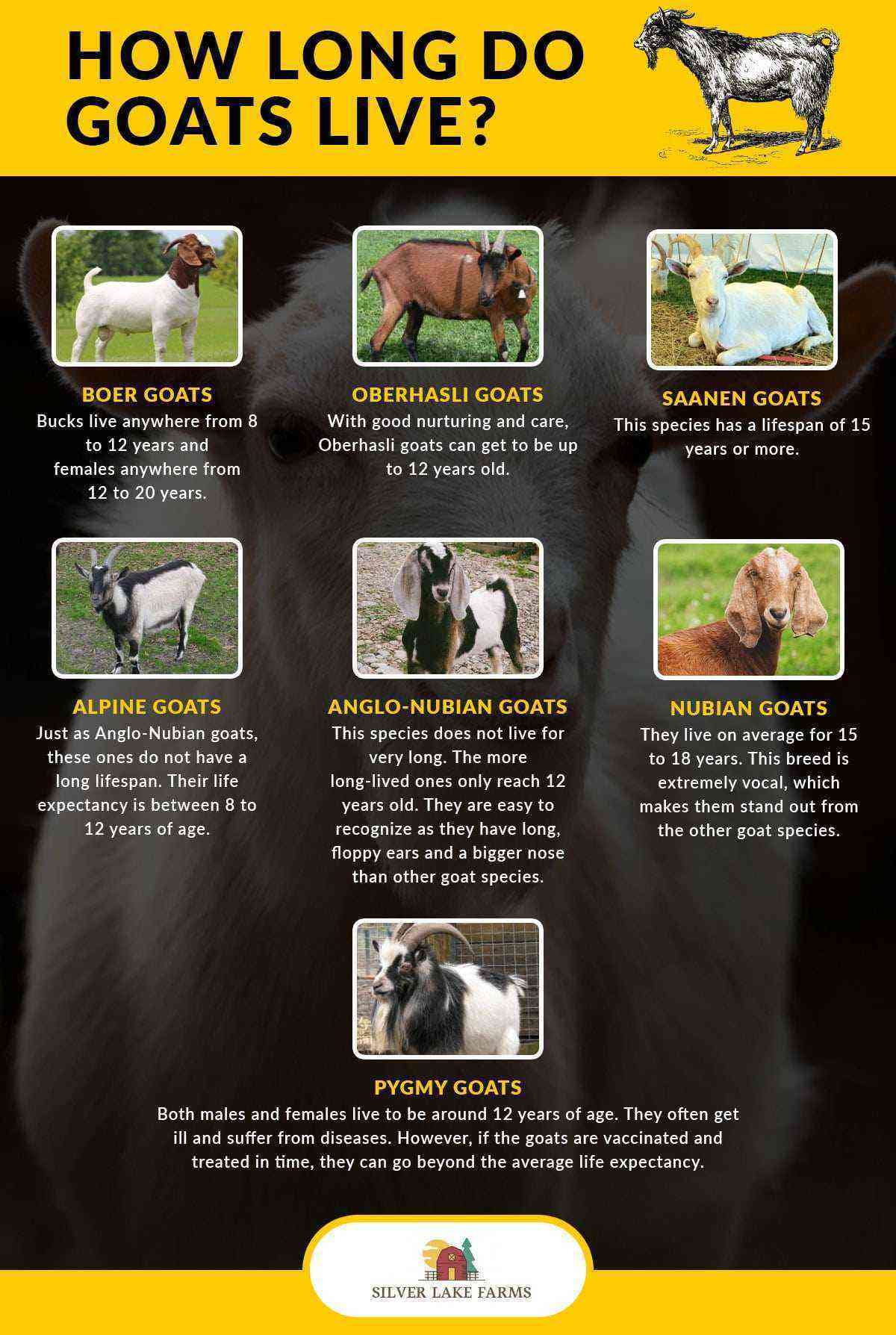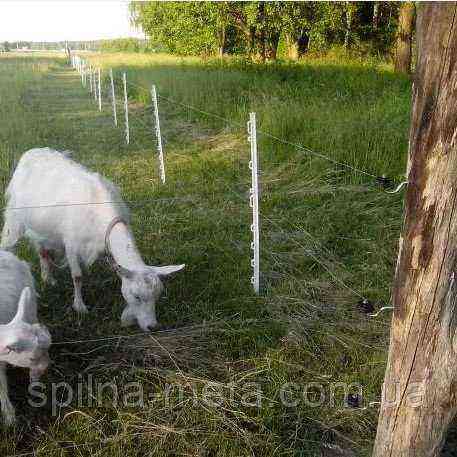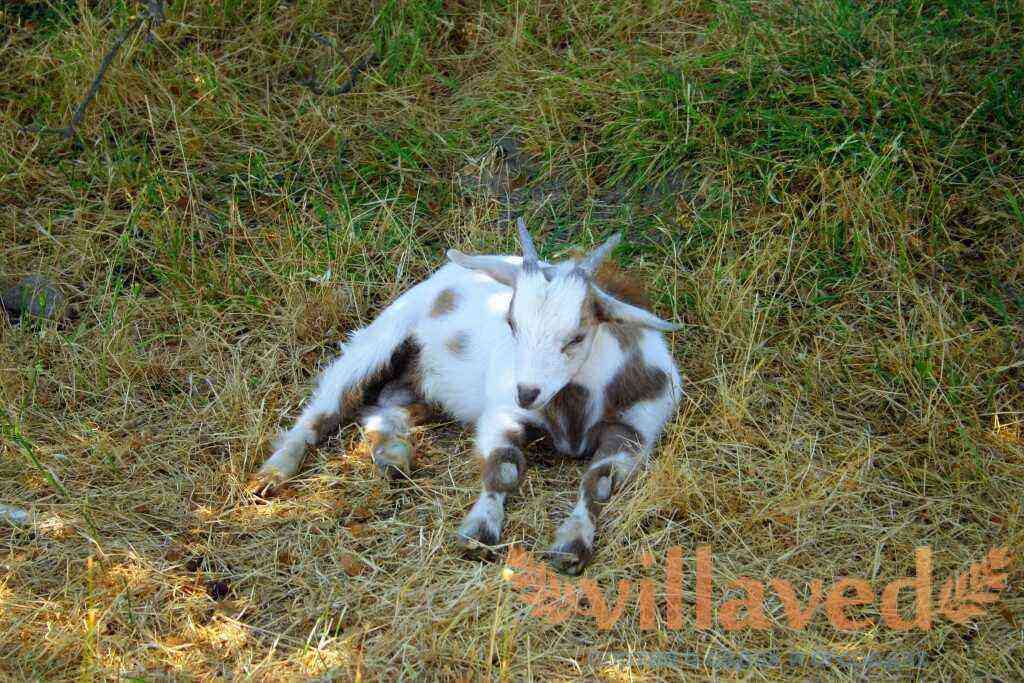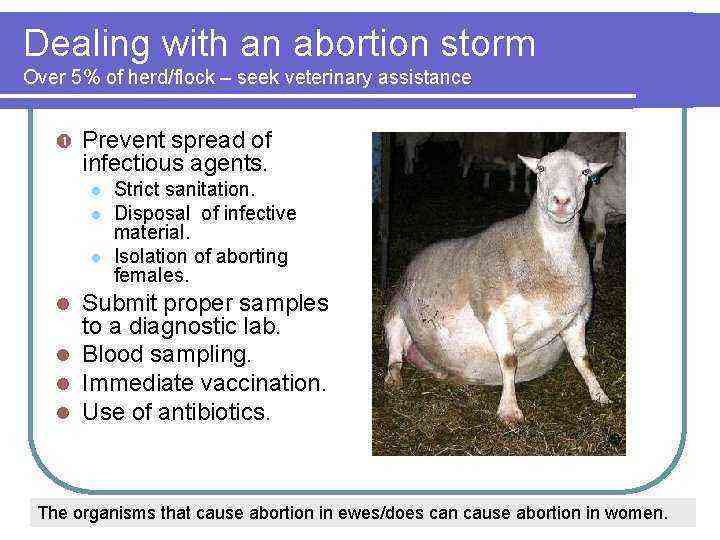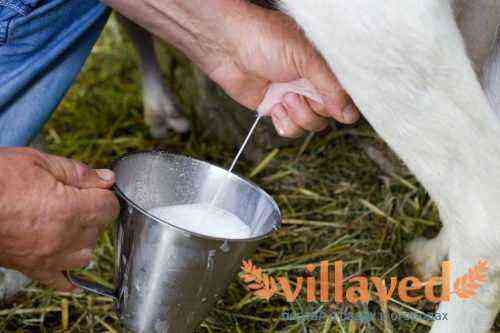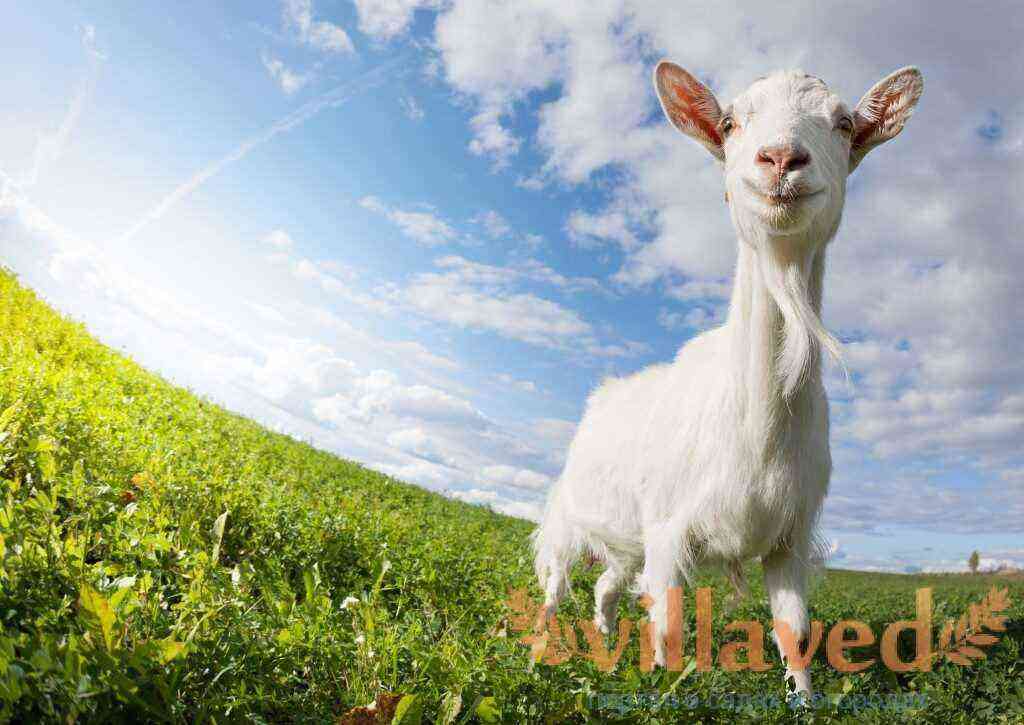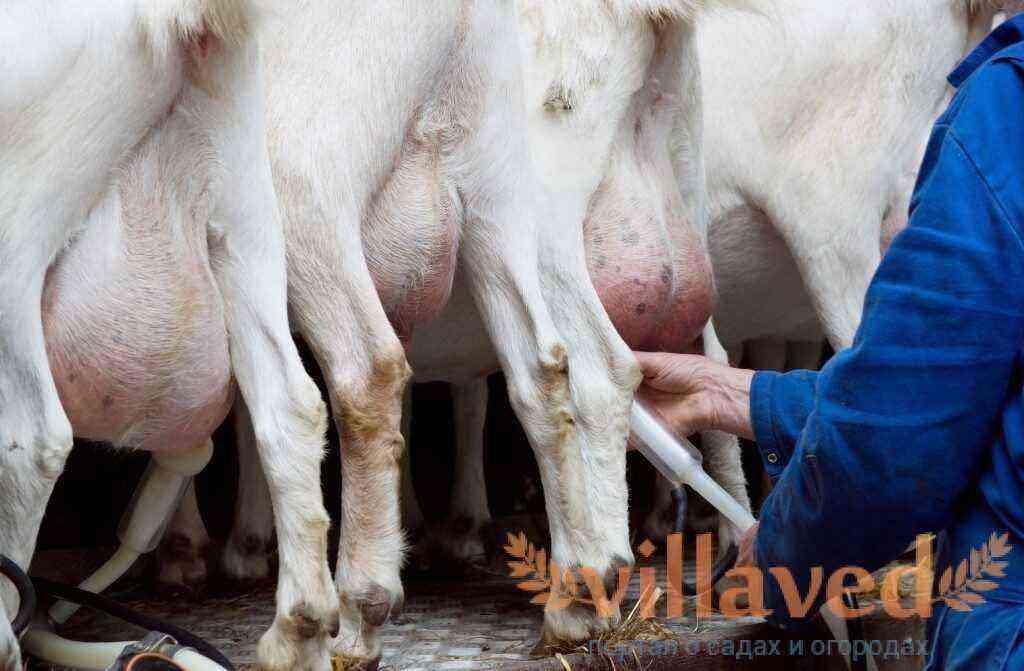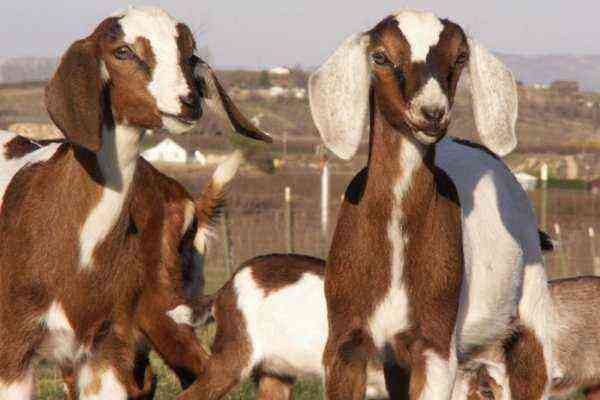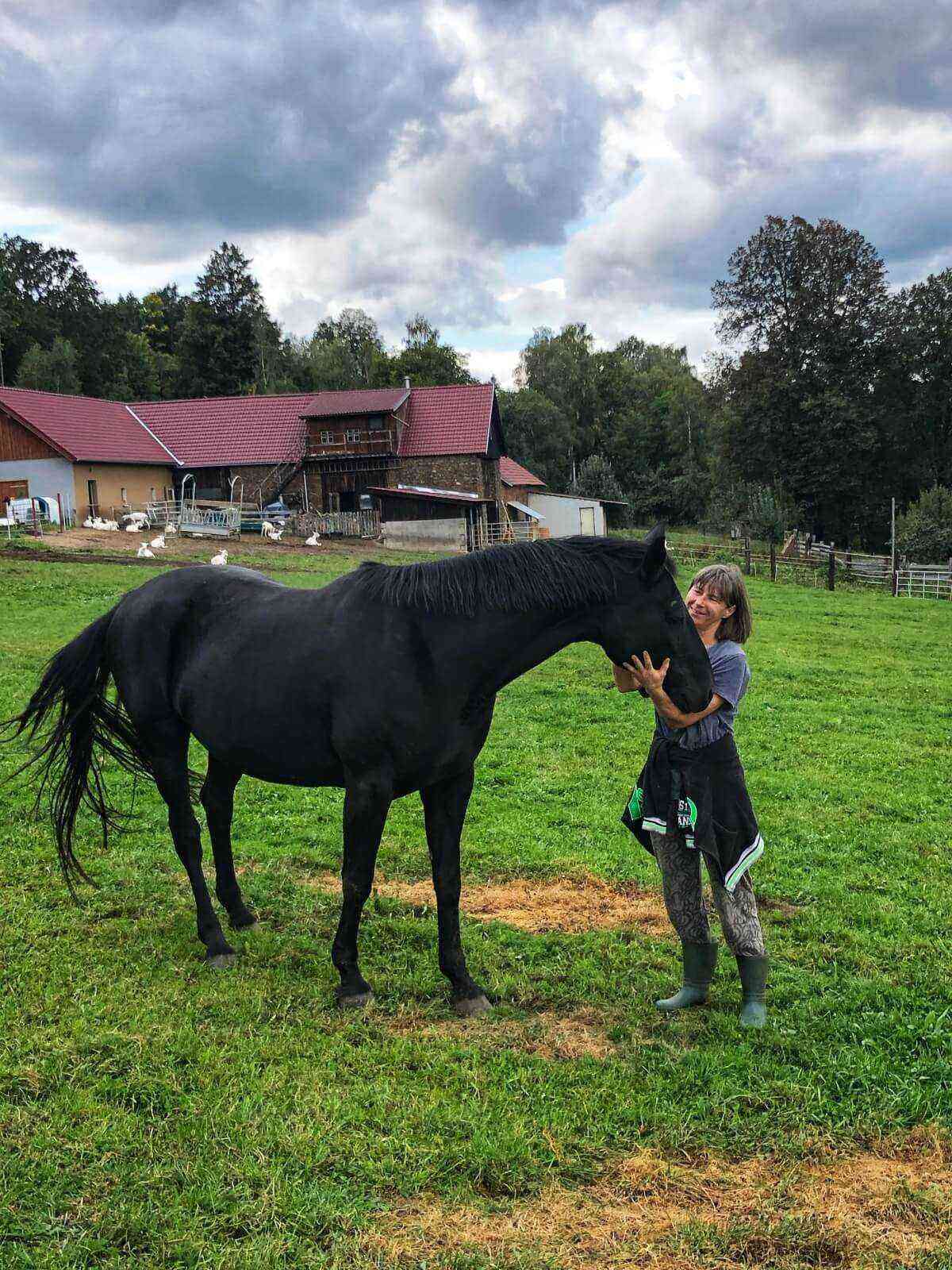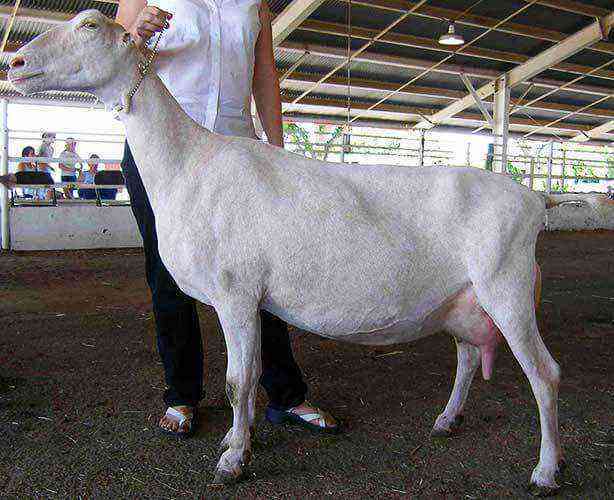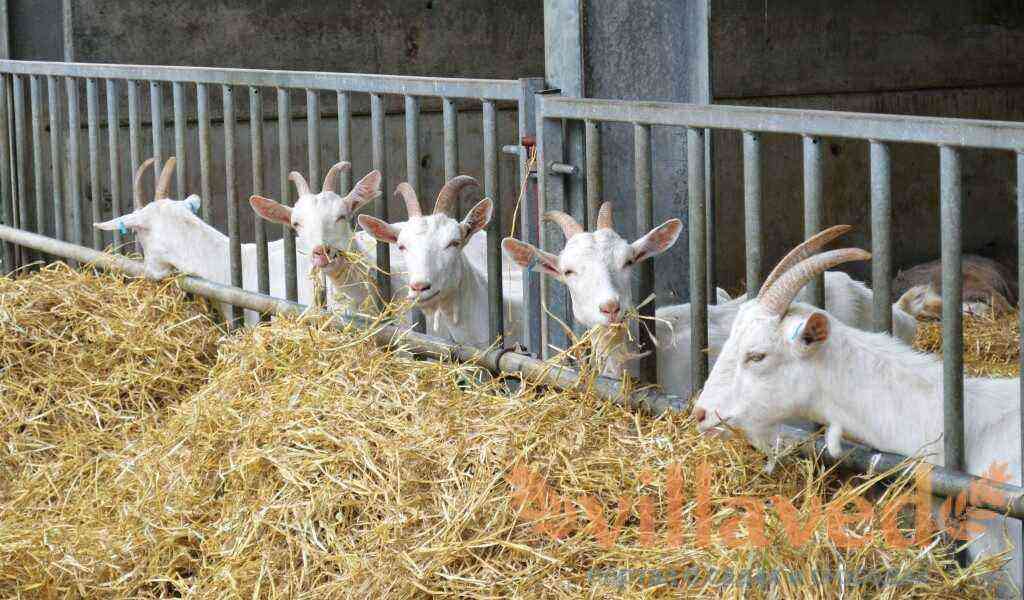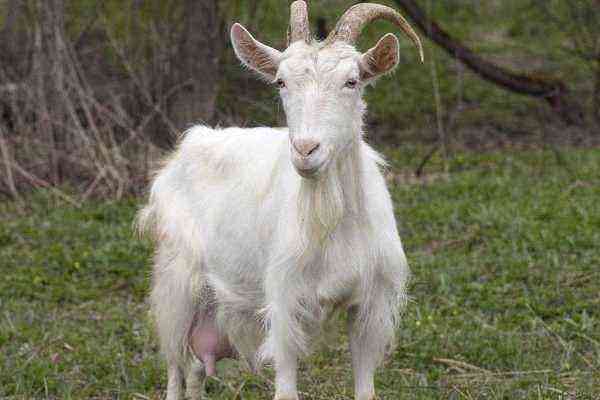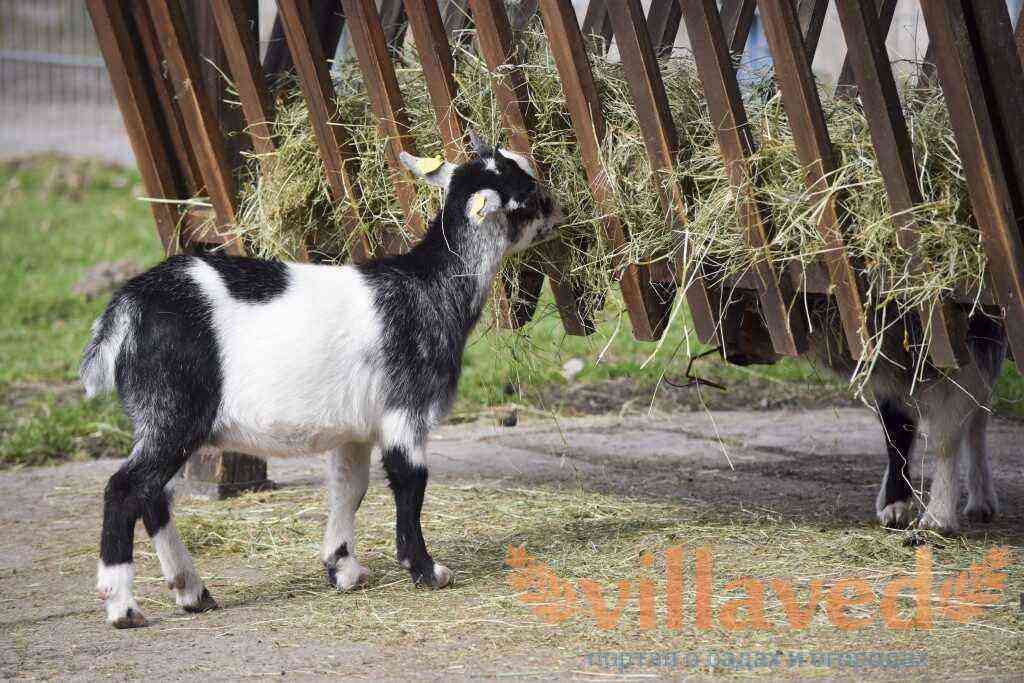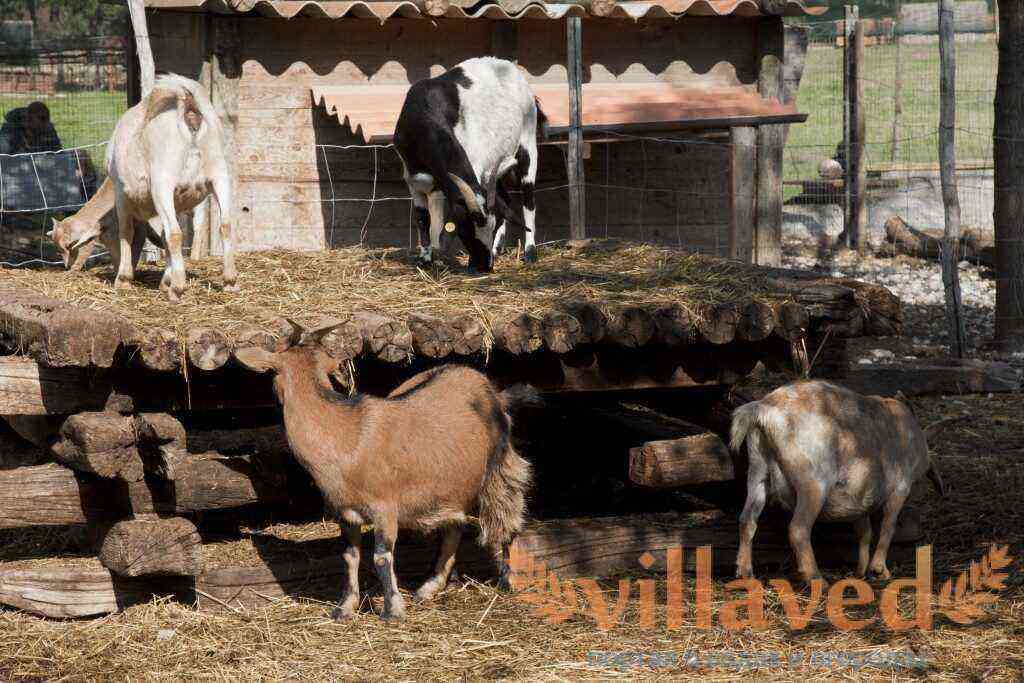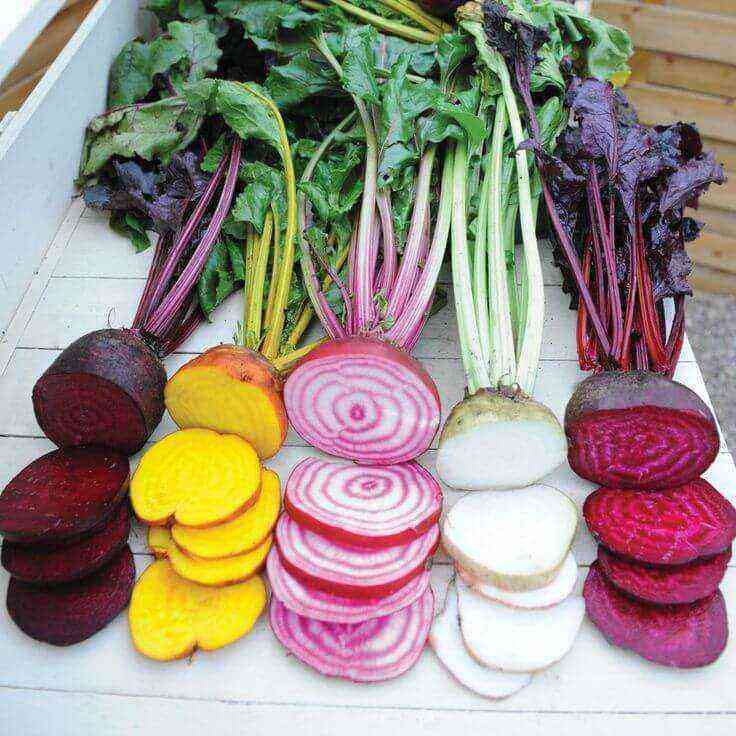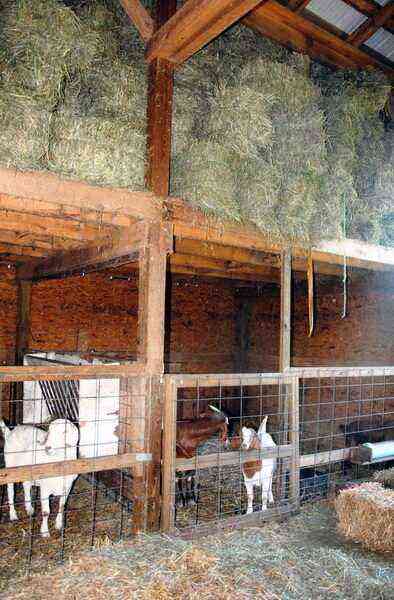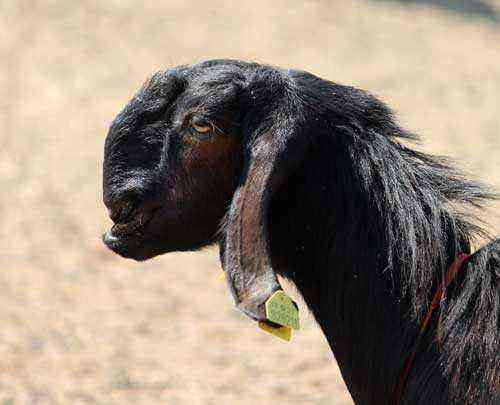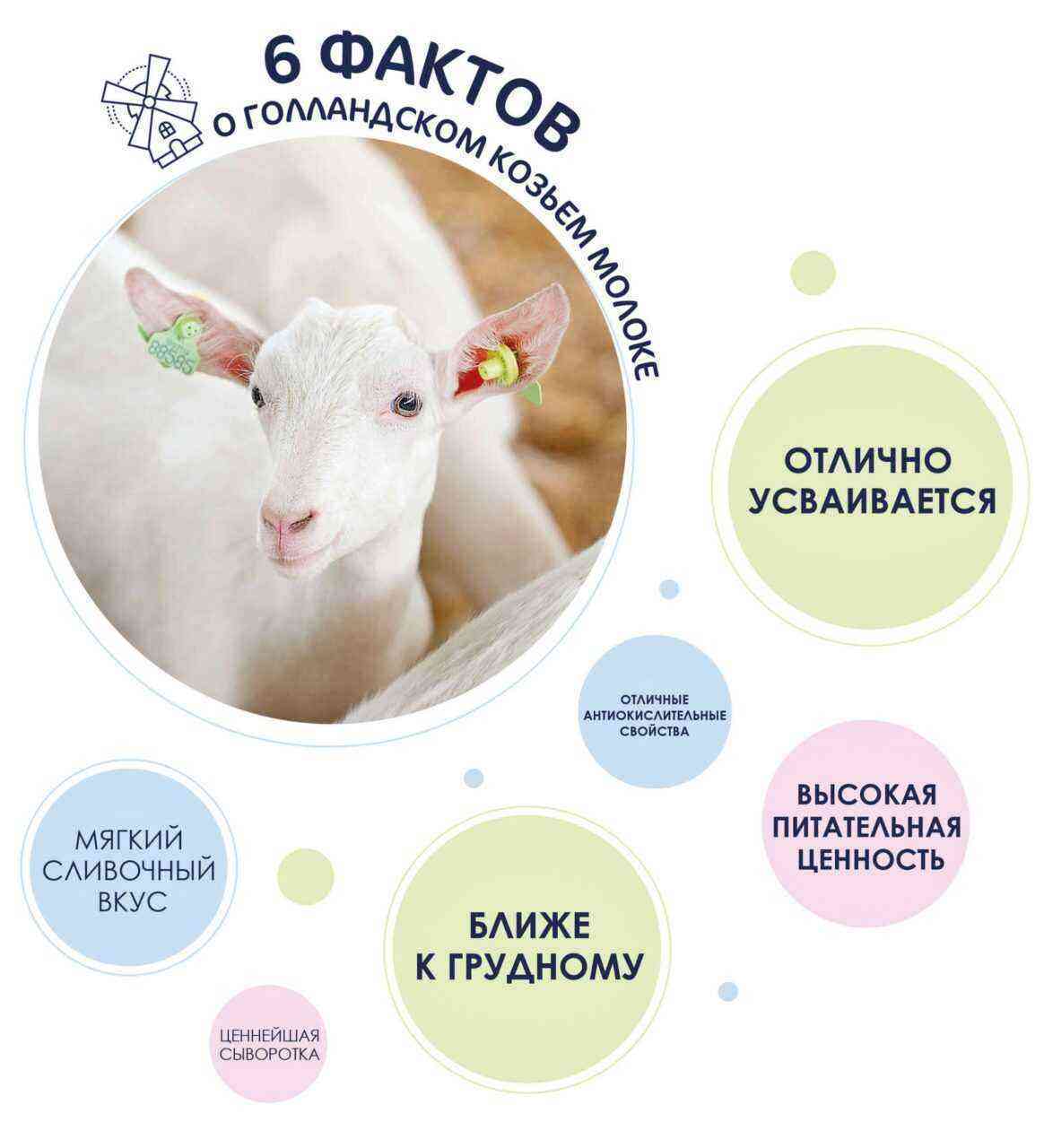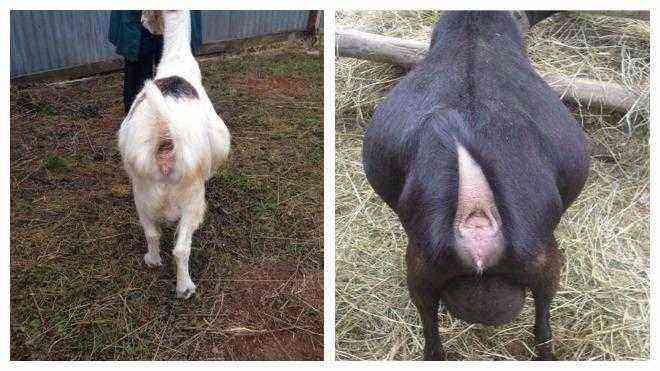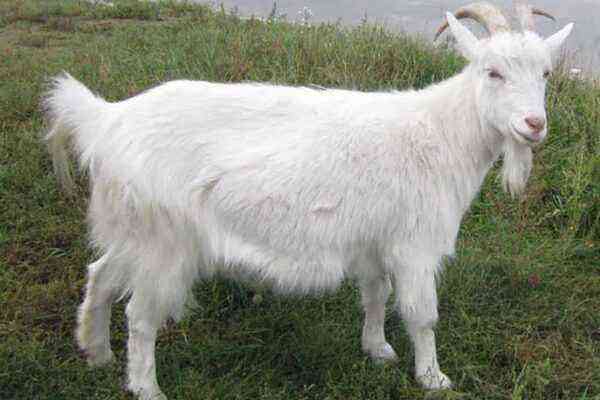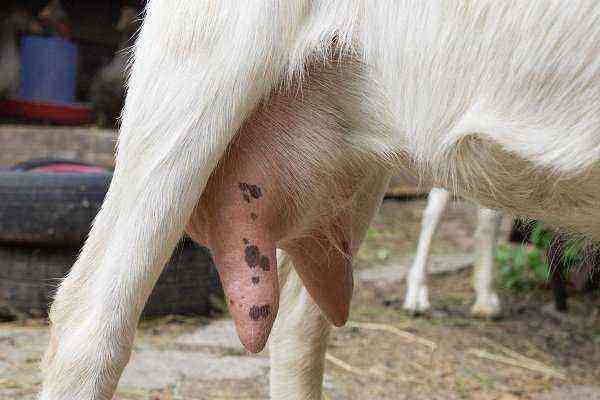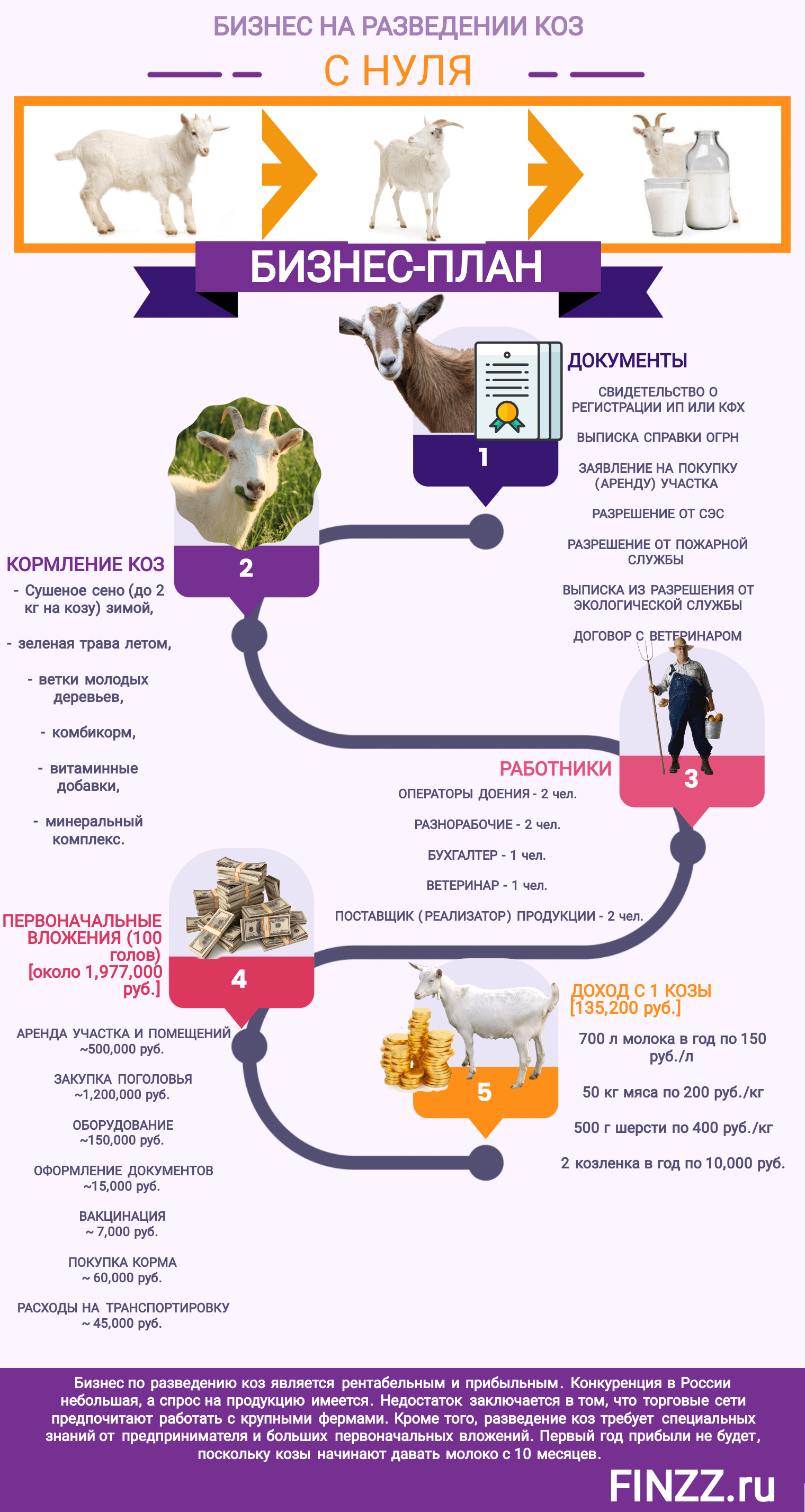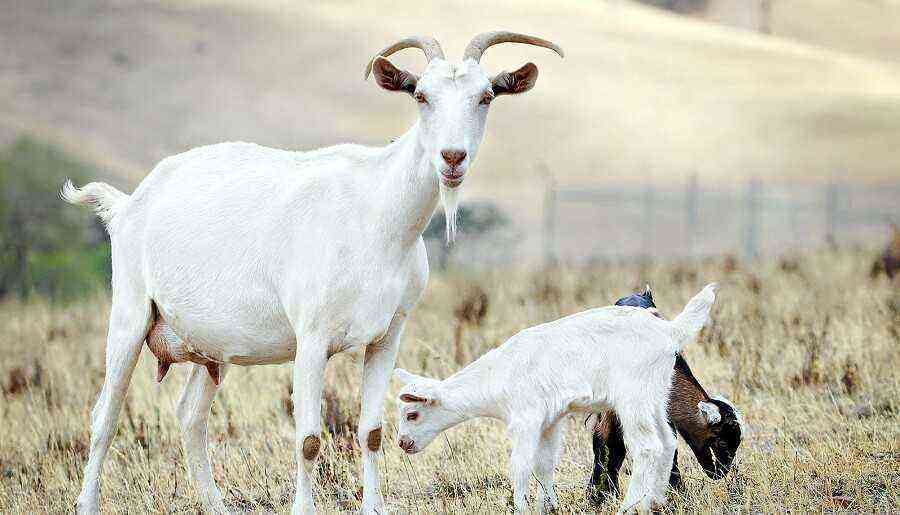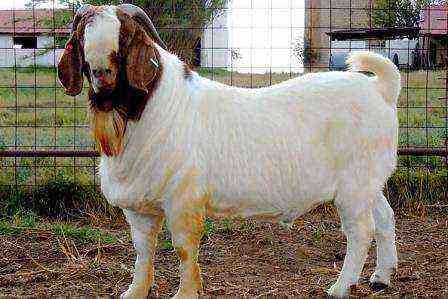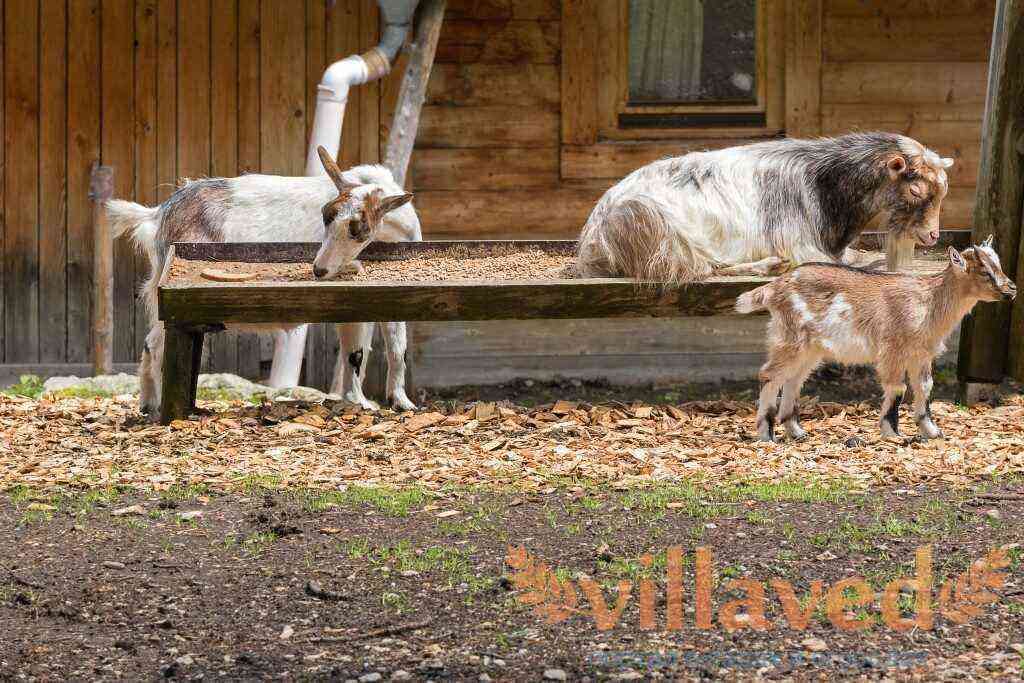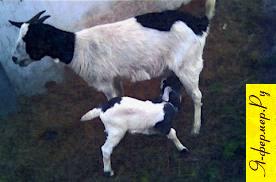 Raising goats to weaning. A comfortable, soft bed is prepared for newborn kids, and if the mother does not lick them, they are wiped with a slightly dry straw, towel or rag and sprinkled with bran, after which the goat usually starts to lick.
Raising goats to weaning. A comfortable, soft bed is prepared for newborn kids, and if the mother does not lick them, they are wiped with a slightly dry straw, towel or rag and sprinkled with bran, after which the goat usually starts to lick.
From the moment of birth, the kids try to get on their feet, and in most cases they soon succeed, and then they begin to look for the mother’s nipples and try to suck, which, however, is not always successful. An hour and a half after birth, the kids are brought to the mother’s udder, and if they still cannot suckle, then this is repeated after an hour, and after feeding the kids, the goat is milked and colostrum is preserved, and if the goat is dairy, then they give her to drink her first milk.
It should not be poured out, as it must fulfill an important purpose in the body of the newborn and must be provided to him in one way or another. Colostrum is necessary for a newborn not only for nutrition, but also as a laxative to remove the original feces, as well as to create a passive, so-called colostral immunity in the body of a newborn kid. During the first 36 hours of life, the intestines of a newborn kid are able to absorb colostrum globulins unchanged. Before taking colostrum, the kid should not be given any substances through the stomach, as this reduces the possibility of penetration of immune proteins by two to three times.
Kids can be fed naturally under the mother and artificially.Let’s describe both these methods.
Normally the mother feeds for 5 to 6 weeks, but for future sires and dairy goats it is desirable to extend this time as long as possible.
You can leave the kids with their mother all the time and allow them to suck as much as they like and at any time (as this should be done when breeding woolly and downy breeds), but you can leave them under the uterus for no longer than 8-14 days and then tie them, allowing them to udder only at certain times.
In assessing these two methods of natural feeding of goats, the opinions of the owners differ.
Proponents of one method argue that if you allow the goat to voluntarily suck the uterus, he drinks less milk at a time and therefore digests it better, and besides, there is less care for the kids in this case. Proponents of another method, on the contrary, believe that by separating the kids from the mother and setting the sucking hours, they avoid constant anxiety for the nurses, and this ensures better digestion and digestibility of the drunk milk.
Feeding with mother’s milk, of course, is more expensive than artificial feeding, and therefore it is not profitable for kids not intended for the tribe, but for breeding animals it is absolutely necessary.
In some dairy farms, the kids are left under the mother during the first 4-5 days, while the milk is still not quite normal, but this seems to us completely unreasonable, and one should choose one of two things: either to feed the kid under the mother, or as it is done with cattle, fed artificially.
If a goat has brought three kids or more, then after the first day one or two will have to be slaughtered, if it is not possible to transfer them to other goats that have one kid each. Three kids are burdensome for a mother. With artificial feeding, the kids are transferred to another room so that neither the mother nor they hear each other, and they are fed with freshly milked mother’s milk for the first 4-5 days, every one and a half to two hours. This feeding with whole milk lasts 4 weeks. Here it would be appropriate to say a few words about teaching a kid to drink milk and swill, since after 10-15 days he already begins to try to eat on his own. The sooner the goat eats plant foods, the faster it will develop the proventriculus and the faster it will begin to eat plant foods.
Unlike most other young goats, they often require the intervention of the owner in accustoming them to swill. It is clear that in order to give more milk, it is necessary to absorb as much liquid as possible, but meanwhile, a goat that has not been accustomed to drinking from a young age often refuses liquid food.
To accustom a kid to take such food, he must be put on his knees, with his left hand tilt his head to the swill, and with the index finger of the right hand, immersed in the swill, touch the tongue and palate. The young animal begins to suck his finger, which is gradually removed from his mouth, and soon the goat learns to drink liquid food.
It is also good to sprinkle a little salt on the muzzle of a kid, and after half an hour offer a drink according to the above method, shown in the figure.
Usually, when artificially feeding goats, they use a plastic or enameled bucket, but we strongly do not recommend using wooden utensils, the clean maintenance of which is very difficult, besides, there is a nipple drinker for drinking. You can also water the goat from a bottle with a rubber nipple, which is closest to natural feeding, or simply from a bucket, immersing the tip of the muzzle in the swill and allowing the goat to learn to drink. In the latter method, care should be taken not to dip the nostrils into the drink, as in this case the goat acquires the habit of swallowing too much milk at once. In general, drinking from a bucket is inconvenient, since milk enters the stomach undiluted with saliva, which disrupts digestion.
From the beginning of the fifth week of life, whole milk is gradually diluted with water, adding oatmeal, flaxseed, bran so that by the seventh week the kid gets only one mash. You should also gradually accustom the kid to good meadow hay and fresh grass. A little table salt should be added to any feed, which has a great effect on digestion and increases appetite.
Goats should be fed with whole milk for a month longer than goats.
Exercise in the air for a young animal, as well as for a nursing mother, is absolutely necessary. In warm weather, in spring and summer, the mother with the kids (if they are not taken away) is released into the air from the 3rd day, and the weaned kids can be released to run, and from the age of two weeks they remain in the air all day.
For winter and rainy times, it is desirable to have a spacious room in the barn, where the kids could frolic in freedom.
If the kids are suckling under the uterus, then after each sucking it is necessary to give milk, as the kids do not always free the udder from milk. Older kids sometimes do not have enough mother’s milk and then they should be fed either with cow’s milk or fed with whole milk replacers (WMS), which are produced by some feed mills or lambs dairies. They contain 27-30% fat, 24-26% protein, up to 7% ash and supplements of vitamins and trace elements. Before feeding milk replacer is diluted in warm water at the rate of 200 g per 800 g of water. The resulting suspension is cooled to 38-40° and evaporated.
It is best to feed goats with colostrum and mother’s or nurse’s milk in pairs, however, after milking goats to lambing, colostrum is often stored in the refrigerator. In such cases, colostrum or milk is heated to a temperature of 37-38 ° and drunk from the nipple, or nipple drinker.
Older goats (30-45 days old) begin to drink milk diluted with boiled water. To this mixture is added seeded oatmeal, flour or wheat bran, as well as mashed boiled potatoes. They begin to feed such additives at first in small quantities, gradually increasing the summer cottages in such a way that by the time they are weaned, the kids can eat large amounts of vegetable feed on their own.
It must always be remembered that in goats the proventriculus (rumen, book and net) are poorly developed at birth and reach the development necessary for a ruminant animal by the third month of life.
Cleanliness when feeding kids is of great importance, milk cooled in a bowl soon turns sour from contamination, begins to ferment and causes diarrhea, often ending in death.
With proper feeding and sufficient movement in the open air, kids develop and grow quickly.
For brood purposes, spring-born kids born between February and April from the best in health, productivity and queen build should be kept.
At the age of one and a half to three months, kids are usually taken away from their mothers.
S.P. Urusov
